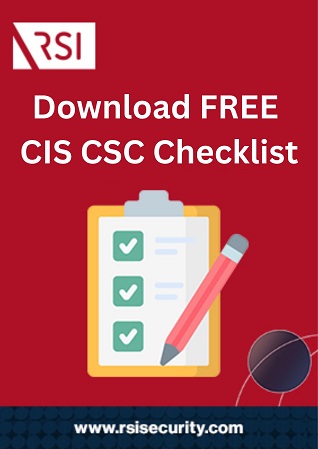News reports have never run out of distressing stories about Internet security standards. Credit card breaches, identity theft, privacy threats, denial of service, intellectual property theft, and data losses are just a few of the notorious cybercrimes committed online.
It is counterproductive to ignore cybersecurity threats. A robust defense is needed to overcome these vulnerabilities. This is why it is essential to comply with the Center for Internet Security Critical Security Controls (CIS-CSC).
The CIS-CSC prioritizes security standards for the Internet by organizing all available tools, technologies, training, best practices, and cybersecurity recommendations. It is written in a practical and easily understandable language, helping to avoid confusion and chaos.
To assess if your Internet safety protocols are up to par, here are essential security standards that must be compliant with the CIS-CSC.
Protecting the Hardware
The Critical Security Controls comprise three controls: the Basic, Foundational and Organizational Controls. But here, we will focus on specific parts of Internet safety and then determine the Critical Security Controls that correspond to it.
First up, we will tackle the physical platforms where online connectivity takes place.
CSC number 1: Inventory of Authorized and Unauthorized Devices.
Companies must have a comprehensive awareness of all physical devices that have access within the network. It is imperative to avoid unauthorized devices from entering the system. An inventory will help swiftly identify any illegal device before they can inflict any damage.
Cyber attackers are continually looking for unprotected physical spaces to infiltrate. One of the particular targets are devices that can come and go off the network of the organization.
Download Free CIS CSC Checklist
CSC number 9: Limitation and Control of Network Ports, Protocols, and Services.
Since we discuss portable devices, the CIS has established a specific Critical Security Control that focuses on the physical spaces where these devices can establish contact. These are the network ports and their associated protocols and services.
As gateways to the system, organizations must devote attention to these infrastructures to minimize the windows of vulnerability that cyber-criminals can exploit.
Finding a loophole is the name of the game for cyber attackers. If they can find a web server, a domain name system, or a mail server with low configuration, they will tamper and take advantage. Network ports with a validated business need should be the only ones running.

CSC number 11: Secure Configurations for Network Devices.
Network infrastructure devices such as switchers, firewalls, and routers are also vulnerable if there is no active management in place.
These devices have default configurations that are designed for ease of use and not for security. Attackers can use a compromised device to disguise as a trusted system and exploit weak network infrastructure.
CSC number 15: Wireless Access Control.
Wireless local area networks (LANs) are another system gateway that cybercriminals can exploit if there are no protections in place. These may be considered physical infrastructure, but they do not require direct physical connections or wirings to operate.
Because of their wireless nature, these devices are favorite targets of cyber-attackers. They can be infected regularly and used as back doors to enter networks. The company conducts network vulnerability scans and monitors the use of wireless LANs and client systems.
All connected wireless devices must have an authorized configuration and security profile.
Assess your CIS CSC Compliance
Safeguarding the Software
Most of the digital environment is contained in the software. As necessary to protect the hardware, software integrity is also vital for Internet security guidelines. Here are the relevant Critical Security Controls that specify protections for the software:
CSC number 2. Inventory of Authorized and Unauthorized Software.
Active management of software is integral to ensure the installation of authorized software within the network.
Measures such as application whitelisting can enable organizations to scan unauthorized software from a list before installing.
Cybercriminals are experts in finding vulnerabilities in software versions that have not been updated. These hostile openings are used to distribute malicious files, pages, and content. It is essential always to have proper knowledge of the software used by the organization.
CSC number 7. Email and Web Browser Protections.
Organizations must fully support web browsers and email clients. These are common entry points for hackers because of their technical flexibility and complexity. Cyber-criminals can also create spam and phishing tactics that can lure and fool personnel into taking actions to introduce malicious codes. Data protection is at stake if this is not protected.
Here are a few more articles to help you learn more about CIS CSC :
CSC number 8. Malware Defenses.
There must be control points to curb and control the installation and execution of malicious code in the system. Automated tools that can monitor workstations, servers and mobile devices are among the best practices for this Critical Security Control.
Malware can be very adaptive and dynamic. This is why anti-virus, anti-spyware, and personal firewalls can do a lot to stop them from accessing the network. Large-scale automation, regular updates, and consistent integration can help bulk up the malware defenses.
CSC number 10. Data Recovery Capability.
Data loss can be very damaging to an organization. Critical Security Control will ensure that sensitive and essential information will be backed up regularly. In the event of data tampering, a reliable backup will help organizations recover quickly and efficiently.

CSC number 18. Application Software Security.
The security lifecycle of all software must likewise undergo active management to detect security vulnerabilities. The company must use the most updated version of the app at all times. Neglecting this can open cybercriminals’ opportunities to inject exploits, buffer overflows, SQL attacks, click-jacking of code, and cross-site scripting.
Configurations and Credentials
Access within a network can be controlled with the right set of specifications. To align various security standards for the Internet, these must be managed actively as well.
CSC number 3. Secure Configurations for Hardware and Software.
There must be strict configuration management of servers, laptops, and workstations for both hardware and software. The manufacturers of these devices and software have ease of deployment in mind and not tight security protection. To avoid exploitation by cyber-criminals, they must be configured for company use.
CSC number 5. Controlled Use of Administrative Privileges.
Administrative privileges are the keys to the system. If they are compromised, cyber-criminals will just barge in and steal, tamper, and mutilate vital company data. Automated tools can help oversee the movement and use of administrative privileges to check if they are being abused or misused.
Phishing has been a popular tactic in trying to fool personnel into revealing or surrendering administrative privileges. Monitoring the use of these privileges is a good counter against these cyber-crimes.
CSC number 12. Boundary Defense.
The flow of information between networks that have different trust levels must be detected and corrected. There should not be leakages of data that can harm organizational security.
The best practices to defend against these intrusions are using technology that offers deep visibility and control over data flow. Intrusion detection and intrusion prevention systems are good choices for this purpose.
Cyber-criminals often use weaknesses in the configuration and architecture of perimeter systems, network devices, and online client machines to enter networks and systems. There must be a defense for this.
CSC number 13. Data Protection.
Data exfiltration is a compelling threat of cybercrimes. Various laws protect sensitive information, and a breach can subject organizations to massive liabilities, penalties, and reputation loss.
Data protection can be achieved with the right configurations — a combination of integrity protection, encryption, and data loss prevention tactics. These solutions can help minimize, offset, or eliminate risks, whether the data breach was deliberately caused by cyber-criminals or resulted from poor cybersecurity practices and human error.
CSC number 14. Controlled Access Based on the Need to Know.
In an organization, there are critical assets that are very integral to the sustained success of operations. It is better to put these vital aspects of the organization on a need-to-know basis.
Access to these critical assets should be carefully monitored and managed. Many organizations do not carefully differentiate among their most valuable assets, making it easier for cyber-criminals to steal, hack, or disrupt them.
Awareness and Foresight
Cyber-security is more than just a pattern of reacting to threats. The key to victory is to think one step ahead of the criminals and beat them at their own game by taking away their opportunity windows. Awareness and foresight are key attributes that can help bolster defenses.
CSC number 4. Continuous Vulnerability Assessment and Remediation.
This Critical Security Control is all about consistently acquiring new information to identify the latest trends in cyber-crimes. It can also include news on software patches, updates, security advisories, and threat bulletins.
Knowledge is power. When organizations are aware of vulnerabilities, cyber-criminals can no longer exploit them. Risk assessments and regression testing can provide defense before hackers can find gaps.
CSC number 6. Maintenance, Monitoring, and Analysis of Audit Logs.
Audit logs are useful tools in incident management. They help organizations understand and study the extent of damage that an attacker has inflicted on a system. Without a security logging system, finding the exact location in the system where the attacker has burrowed with malicious activity will be challenging.
Studying the logs gives organizations a vital piece of information to help improve their cybersecurity.
CSC number 16. Account Monitoring and Control.
Actively manage the lifecycle of user accounts from their creation, use, and deletion. It can be tampered with by attackers if it is not regularly reviewed. Accounts of former employees must be disabled to prevent unauthorized entry to the network. The problem with inactive user accounts is that they can disguise as a legitimate form of network access.
CSC number 17. Security Skills Assessment and Appropriate Training to Fill Gaps.
The strengthening of cybersecurity starts with the skills of its personnel. There must be a regular program that will provide assessment and training to essential employees. Digital threats are not just technical challenges. It involves a lot of human interaction and the exploitation of errors. Training the personnel will eliminate these risks.
CSC number 19. Incident Response and Management.
Instead of waiting for actual incidents to occur, anticipating these threats is the better course. There must be a system to respond to incidents when they happen — from the personnel’s roles, management oversight, and other measures to control any inflicted damage.
With an effective system in place, the organization will know precisely what to do to immediately eliminate the attacker’s presence, prevent disruptions to operations, and restore the online network’s integrity.
CSC number 20. Penetration Tests and Red Team Exercises.
To best prepare for cyber-crimes, an organization should conduct regular internal and external penetration tests. This will be a dry run of the company’s overall digital security, identifying potential gaps and vulnerabilities.
This cannot be taken for granted because threats evolve at a very rapid rate. The defenses must always be on their toes to stay ahead of attackers.
Expert Guidance on Internet Security Standards
The Internet is a boon to many economies with the opportunities it has presented for digital growth. But this success has made it a favorite target of exploitative cyber-criminals.
Compliance with the CIS CSC is an excellent start to strengthen Internet security standards. For best results, RSI Security has years of experience and expertise to ensure that your organization’s Internet security standards are in excellent shape.

